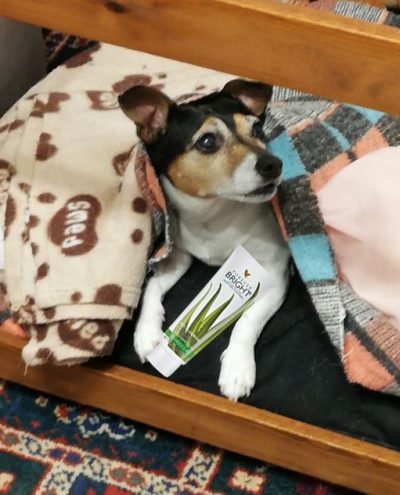Dental disease is very painful for your dog and can often be hidden, dogs will not show obvious signs of dental disease.
Unfortunately, Dental disease is one of the most common medical conditions seen by veterinarians. Over 80% of dogs over the age of three have active dental disease.
Dental chews and dental treats are widely available in supermarkets, pet stores and online but, did you know that these Dental chews and Dental treats tend to be loaded with unwanted calories.
They can also be a large factor in the main contributor in the rising numbers of overweight or obese dogs.
There are also animal specific mouthwashes that are available in the high street however, these can also be toxic to animals if they ingest a large amount.
The above can all be helpful however, should not be viewed as an alternative to brushing.
Signs and Symptoms of dental disease in dogs
If you notice any of the following symptoms, it is likely your dog has dental disease:
- Difficulty eating and chewing
- Tartar build up
- Red and inflamed gums
- Bad breath (Halitosis)
- Swelling (below the eyes / face area)
- Loose teeth
- Rubbing face
Dental disease is common with all breeds of dog, but the following breeds are more at risk:
- Terriers
- Sighthounds (Hounds and Whippets)
- Brachycephalic (Flat-faced breeds)
I recommend Forever Bright Toothgel which my dog loves!
How does dental disease develop?
- When a dog eats there is a build up of saliva and bacteria which mixes together and forms a sticky substance that covers the dogs teeth.
- This sticky substance will develop into plaque over a short space of time if it is not brushed away.
- The plaque turns into a brown substance that becomes hard and smelly.
- The gums become inflamed (gingivitis) and can swell.
- At this stage your dog will start to experience some pain.
- The gingivitis affects the tissue that supports the tooth and then leads to periodontal disease.
- The affected tooth will become wobbly and painful, it will eventually fall out.
Some dogs may not allow you to brush their teeth, there are methods that can be tried to work around this – find out more about Brushing your dogs teeth
which I will write about in a future blog. Seek advice from your vet who will be able to advise you about dental care.

